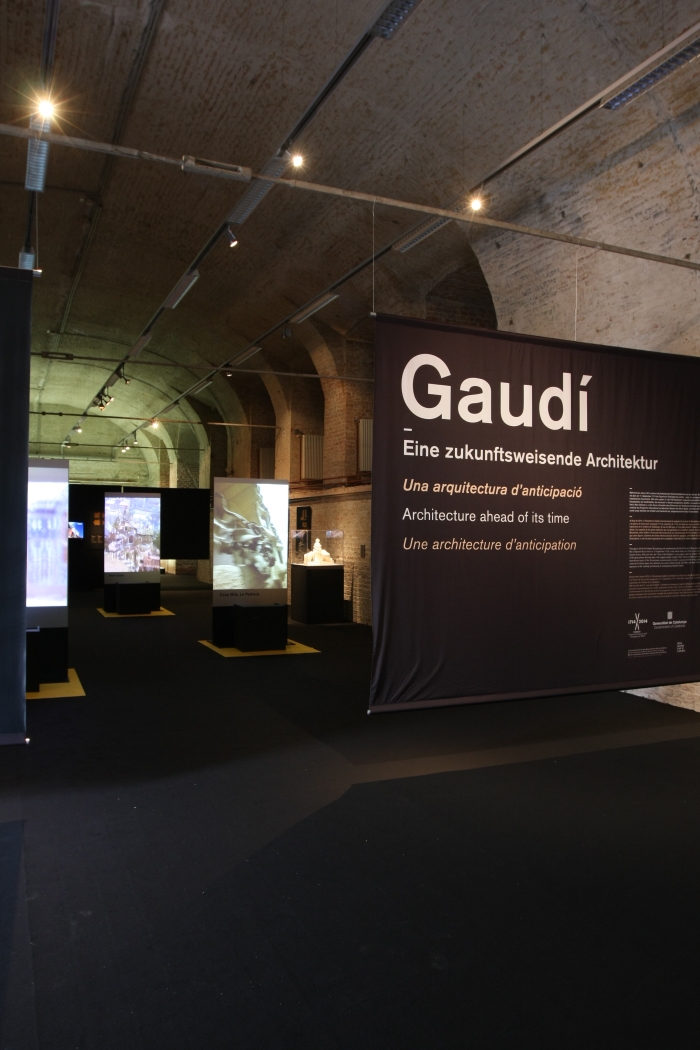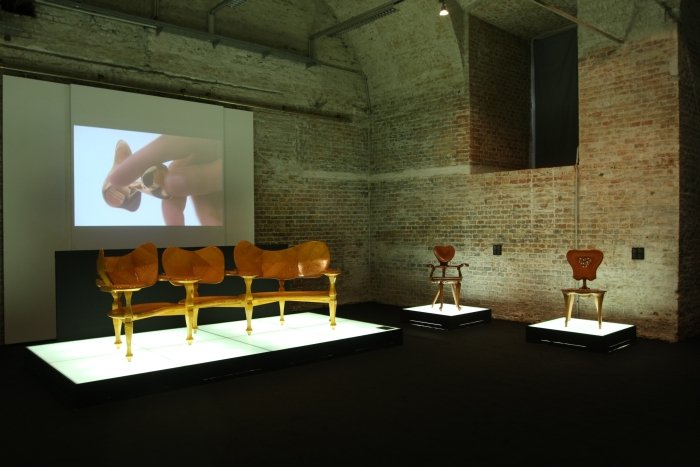Ask most people what they identify as the central feature in the work of Catalan architect Antoni Gaudí and they'll probably mention the abstract Gothic revival forms of the Sagrada Familia in Barcelona or the flowing, organic mosaics of Park Güell. Certainly something visual, potentially something decorative.
Ask art historian, critic and internationally recognised Antoni Gaudí expert Daniel Giralt-Miracle, and he won't. "The skeleton is the central feature of Gaudí's work, everything else comes from the basic skeleton"
And because Daniel Giralt-Miracle is also responsible for the exhibition "Gaudí. Architecture Ahead of it's Time", skeletons is what one gets.
Largely, at least.

Organised by the Museu Nacional d'Art de Catalunya, Gaudí. Architecture Ahead of it's Time is a touring exhibition conceived to present a profile of Antoni Gaudí which goes beyond that which is lazily repeated in every Barcelona city guide and in doing so present a new, fresh impression of the man and his work.
Much like the Vitra Design Museum are currently seeking to achieve in context of Alvar Aalto with their exhibition "Alvar Aalto - Second Nature."
However, whereas the Vitra Design Museum achieve their goal, Daniel Giralt-Miracle doesn't.
Or at least not completely.
The biggest hindrance is the scale and concept of the exhibition. As a touring exhibition Gaudí. Architecture Ahead of it's Time is necessarily limited and simply cannot approach the subject with the depth and spectrum that the Vitra Design Museum can devote to Aalto.
And so although presenting videos, models and detailed plans which provide a clear and entertaining overview of some of Antoni Gaudí's key works, the exhibition can do little more than introduce the works. Curator Daniel Giralt-Miracle is of the opinion that the exhibition contains a lot of text. We've been to exhibitions with more. And for us the exhibition needs even more text in order to help the visitor understand the Gaudí that isn't always visible. Too many visitors we fear will watch the videos and express their amazement and appreciation at and of the aesthetic talents of Antoni Gaudí.
Despite Daniel Giralt-Miracle's assertion that Gaudí's works are about structure, not decoration.
Which of course is one of the aspects that made Gaudí's architecture, as the exhibition title puts it, "ahead of it's time"
"The difference between Gaudí and his contemporaries is that Gaudí worked towards the future" explains Daniel Giralt-Miracle, "Gaudí realised that change was coming and he grasped that!" For all Gaudí grasped that the function of buildings was changing, he grasped that new construction techniques were necessary to meet these functional changes, and was of the opinion that the best way to meet this coming future was with new ways of using traditional materials.
For his Casa Milà apartment building completed in 1912, for example, Gaudí freed the outer façade from its carrying function, supporting instead the whole building on a series of stone and brick pillars. A skeleton from which the room division and functionality grew. When 27 years later Mies van der Rohe used a similar approach for his famous, and famously revolutionary, Barcelona Pavilion, only very few visitors would have been aware of the parallels to Gaudí's construction. Although just 3kms separate the two buildings.
Antoni Gaudí also grasped early on that this new future required not only creating new forms, but developing new ways of planning buildings.
Something wonderfully demonstrated by the so-called Stereo-funicular Model, a model which for Daniel Giralt-Miracle best illustrates Gaudí's forward thinking nature.
Resembling an ill-conceived student lighting project, the Stereo-funicular Model is in essence a system of strings and lead weights that Gaudí used to help develop his design for the Church of Colònia Güell. Having attached a series of initial strings to the roof to form a series of catenary arches, Gaudí then strategically hung further strings and weights from these arches thus allowing him to model the form he wanted for the church. To create the skeleton from which the rest of the structure grew. A system as simple as it is effective, negating as it does the need to sketch the plans and manually calculate the curvature of the supporting aches. Nature does that for you. Gaudí would later apply a similar process when designing his Sagrada Familia.

In addition to the architecture the Gesamtkünstler Antoni Gaudí also designed and created the interiors of his buildings, just as his contemporaries such as Henry van de Velde or Charles Rennie Mackintosh did for theirs. Particularly interesting in context of the fixtures and fittings is Gaudí's attempts at creating ergonomic designs. Door handles, for example, with slight curves to better fit the hand, or whereas most of his contemporaries including the aforementioned van de Velde or Mackintosh were producing straight, formally rigid furniture, Gaudí's work has a much freer, more abstract form, very reminiscent of buildings by the likes of Erich Mendelsohn or Rudolf Steiner. Yet a freer, abstract form that isn't based on any aesthetic considerations, but rather on aiding the comfort for the sitter. Form following if not function, then anatomy.
A well organised and excellently designed exhibition Gaudí. Architecture Ahead of it's Time presents an wonderful introduction to and overview of the man and his oeuvre, just as we say without ever going too deep or attempting to move the discussion in completely new directions. It is all very familiar, if the perspective is sometimes new.
But for all who want to know more, dig the depths, the Architekturzentrum Wien Library is just across the courtyard, and in addition to a collection of over 13,000 architecture books, they also have a specially prepared Antoni Gaudí "Reading List" to accompany the exhibition.
Gaudí. Architecture Ahead of it's Time runs at the Architekturzentrum Wien, Museumsplatz 1, 1070 Wien until Sunday November 2nd
Full details can be found at www.azw.at